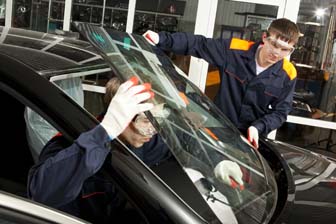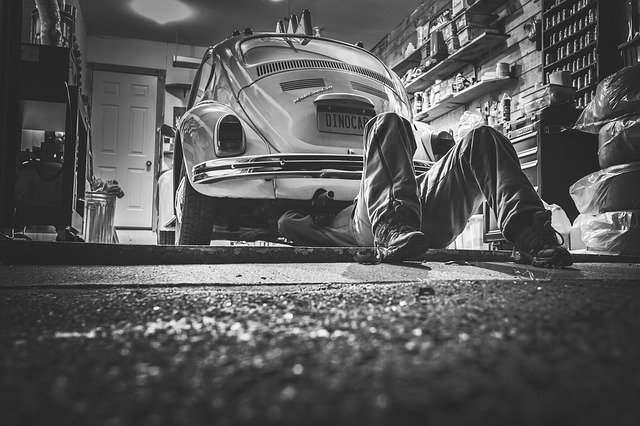
Auto parts are becoming more expensive, but they're still in the sweet spot for retailers. They don't create sticker shock like a fully-assembled car. Still, this doesn't mean retailers should drop their prices. Here are some tips about how to price auto parts. These are the top three reasons that auto parts are more costly than fully-assembled vehicles. These tips can help you make the right pricing decision for auto parts.
Profitability
There are many factors that determine the profitability and value of auto parts pricing. Some parts have very low margins, while others have high margins. You can make a profit of around twenty percent if you purchase a car part and mark the price up twenty percent. The same part might be sold at a discounted price of around thirty percent by a local repair shop. These differences do not apply to the average vehicle repair order.

Convenience
In our daily lives, it is obvious how important convenience in auto part pricing is. Autos will soon be able to drive themselves to repair shops and back again. To survive in this increasingly competitive market, auto parts retailers need to find new ways to provide a better service and a more convenient pricing structure. Shipping costs are another important consideration. Shipping costs are an important consideration for over half of consumers.
Supply chain
In 2022, the automotive industry was faced with a number of problems and challenges. Although the industry has experienced relative stability over several years it is unlikely that this will change anytime soon. This is why manufacturers need to be more adaptable and flexible to change. In this article we will explore the causes that auto parts pricing has become unstable in the supply chain. Let's examine the main reasons why. A supply chain can be complicated and have many moving parts. The problems that automotive suppliers face can have a huge impact on the price of auto parts.
Cost
The cost of auto parts has been on the rise over the last several years, but it's not yet a'sticker shock', as it is for the full-assembled vehicle. Many parts can be sourced from auto suppliers. However, most repair shops won't install customer-supplied parts, which increases the cost of repairs. Additionally, auto repair shops invest 40 to 60 hours annually in training employees so that they can keep up to date with the latest vehicle technology. Auto parts stores, by contrast, are much cheaper and sold to DIYers.

Markup matrix
Parts markup matrixes are a great way to ensure your shop makes the most of parts. The most commonly used matrix is based off customer price code or source. You can create different scenarios by using a variety sources. This includes pricing competitive parts at factory-list prices or at a lower profit percentage. Another common matrix is your percentage for captive parts like Motorcraft or AC Delco. Another example is the pricing structure of parts that are subject to special-service pricing.
FAQ
What does it take for a mechanic to be a good one?
To become a skilled mechanic, you need years of experience and practice. The best way to learn how to repair cars is by working under the supervision of a professional mechanic.
You will have to spend time in a garage learning about cars and mechanics. Mechanical engineering books will be required to learn about mechanics and design.
Additionally, you will need to attend an auto school.
It's crucial to start as soon as possible. Don't wait until you're older to begin studying automotive technology. You can get certified as a mechanic by getting started right away!
Does it really matter what college I choose?
Non, really. There's no difference between colleges regarding getting into the automotive industry. Some schools have better programs than others, so you might want to look elsewhere if your goal is something more specialized.
How can I fix my automobile as a hobby.
Take up a hobby in car repair if you have an interest. You can repair them, buy their parts, sell them, or just have fun with them. It's a fun hobby that you can do if it interests you.
But it is not easy to turn this into your full-time occupation. It takes dedication and hardwork. And you'll need to invest a lot of money too.
So unless you have a good reason for wanting to get involved with cars, then it might be best to leave it alone.
Is it worthwhile to become a mechanic?
The answer to that question depends on what your life purpose is. If you're looking for money, then it's true. But, if there are meaning and purpose in your life, then it's not.
If you don’t have any mechanical skills, it’s pointless to get into it. It will just waste your time. It's not going to make you rich. You won't become famous. It is unlikely that your life will change.
You'd need to spend years learning how everything works. This would mean that you would have to pay someone else for your car's repair. Most people won't bother to do it. They find something more worthwhile.
To sum up, if you want to earn lots of money then go ahead. But if you want to live a meaningful life, stay away from the mechanic's industry.
How do I prepare to be a mechanic apprentice?
It is vital to be able to comprehend what you are doing. It is important to know the basics of how cars work. This way, you know where to start when you go on your first day at the garage.
Also, you need to know how fix simple problems, such as tires and lights that aren't working.
This should help you learn how to diagnose issues and repair them yourself.
You'll also need to know how different parts fit together to put them back together again.
Finally, you should be able use tools safely.
All these aspects will help you become a competent technician.
What are the qualifications for an automotive technician
You need to have high school diploma or GED and good grades in English as well as maths. Also, you must be able read and write. Before you can start working, you will have to pass a written exam and take a series practical tests.
Statistics
- Apprentice mechanics earn significantly less hourly than mechanics who have completed training, with a median wage of approximately $14.50 an hour, according to PayScale. (jobhero.com)
- 52% of Mechanics in the United States think their salaries are enough for the cost of living in their area. (indeed.com)
- According to the BLS, the median annual salary for automotive service technicians and mechanics in the United States was $44,050 in May 2020. (uti.edu)
External Links
How To
How to properly diagnose your car for repair
The symptoms of your vehicle are the first thing you need to look at in order to determine whether it is in dire need of repairs. Then, follow these steps to diagnose your vehicle properly.
-
Check engine lights. Make sure to check all dashboard indicators like the engine light indicator (oil pressure gauge), the battery indicator (battery light indicator), and the RPM indicator (rpm gauge). You may have a problem with your vehicle if any of the indicators are flashing for more than a few days.
-
Inspect the tire treads. Tires that are worn can cause issues with handling and braking. It is also important to inspect the wheel treads. They should be smooth and clean. The best way to do this is to remove the wheels and take them off. Check the tread condition with a flashlight.
-
Observe the brake fluid level. Keep track of the brake fluid level in your vehicle. This will ensure your brakes function properly. If your brake fluid level is low they might not work properly when you apply pressure.
-
You should test the suspension system. It is common for vehicles to have a suspension system which absorbs shocks or vibrations. It gives you better control and allows for smoother accelerations and decelerations. If your vehicle has a suspension problem, it might feel wobbly or shake uncontrollably. If you are unsure if your vehicle is suffering from a suspension problem, put weight on the front and rear axles to check the movement.
-
Examine your steering column. The steering column connects the steering wheel to all other components of the vehicle. Many accidents can cause damage to steering columns. You should replace the steering column if it is loose or weak.
-
The exhaust pipe should be observed. Exhaust pipes help move gases from the combustion chamber to the atmosphere. You can let harmful fumes into your home if your exhaust pipes crack or leak. You should also fix any bent tailpipes immediately.
-
Take a look under your hood. Take a look underneath the hood to find any strange or unusual items. Fluids could be leaking from your engine. You should also contact a professional technician if there is an unusual odor coming from the engine compartment.
-
It is important to inspect the air filter. Your vehicle's air filter collects dust and debris from the outside environment. Your vehicle will run less well if it has a dirty filter. Replace your air filter regularly.
-
Verify the fan belt. The fan belt is the link between the engine and the transmission. If the fan belt is damaged, the engine won’t turn. It is easy to replace the belt. All you need to replace the belt is a screwdriver with pliers.
-
Check the radiator hose and hoses. The radiatorhose carries water from your radiator to the engine. It can crack or become damaged and leak hot liquid onto an engine. You only need a pair of needle-nose pliers and a small wire brush to repair the hose.
-
You should inspect the windshield wipers. Windshield wipers use electricity to remove snow and rain. If they stop working, streaks could be left on your glass. To fix the problem, simply change the washer fluid.
-
The battery cables should be checked. Batteries provide power to electrical systems inside your car. Always disconnect the negative wire before you replace batteries. Failure to do so can damage your alternator.
-
Make sure your headlights are working properly. Headlights are used to illuminate the road ahead. Poor visibility can result if the headlights don't function properly. Inspect the bulbs for signs of burnt out.
-
Be sure to check the lights. If you approach other drivers at night, lights will warn them. You could be distracted and cause an accident if one does not work.
-
Check the brakes. Before you have a collision, brakes slow down your car. If your brakes aren't working properly, you may lose control and crash into other cars.
-
Change the oil. The oilkeeps your engine lubricated. It helps keep metal parts from getting too worn down. It is recommended to change the oil each month.